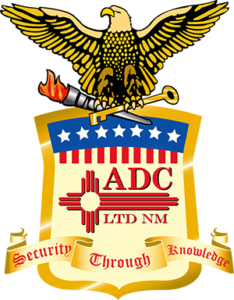
Do Background Checks Show Job Titles? Understanding Employment Verification
The hiring process can be a daunting journey, not only for candidates but also for employers aiming to build a trustworthy and reliable workforce. One of the most critical steps in this process is employment verification, which ensures that the information a candidate provides aligns with their work history.
So, what details are checked during employment verification? From job titles to performance reviews, this guide will walk you through the essential aspects of employment verification, why it matters, and how to ensure your hiring decisions are informed and compliant.

Why Employment Verification Matters
Employment verification isn’t just about confirming dates and titles—it’s about trust. By verifying a candidate’s professional background, employers protect their organizations from risks like fraud, legal liabilities, or cultural mismatches.
A common concern for employers is, “Do background checks show job title?” The answer is yes. Employment verification typically includes confirming job titles to ensure accuracy and prevent candidates from misrepresenting their qualifications.
Ensuring accuracy in a candidate’s work history allows you to make better-informed decisions, strengthen your hiring processes, and maintain compliance with industry regulations.
Beyond that, this step reinforces a culture of accountability, demonstrating to both candidates and employees that honesty and integrity are valued at your organization.
What Details Are Checked During Employment Verification?
1. Job Titles
One of the most frequently asked questions is, “Do background checks show job title?” Yes, verifying job titles is a crucial part of employment background checks. The candidate’s job title reveals more than just their role; it also indicates their level of responsibility.
Employers verify the title to ensure the candidate isn’t exaggerating or misrepresenting their role to appear more qualified. For example, a candidate claiming to have been a “Marketing Manager” may have actually worked as a “Marketing Assistant,” a distinction that impacts expectations regarding their skills and experience.
2. Dates of Employment
Verifying the length of employment at previous organizations is a crucial step. Do background checks show job title along with dates of employment? Yes, they typically do. This ensures that employers can detect gaps in employment or overlapping dates that may signal discrepancies in the candidate’s timeline.
While gaps don’t always indicate a problem, identifying them allows employers to ask for clarification and better understand the candidate’s career path.
3. Work Responsibilities
Employment verification often includes cross-referencing the candidate’s claimed responsibilities with their actual job description. This ensures that the skills and experiences listed align with their previous roles.
4. Performance Reviews (Optional)
Employers may sometimes inquire about the candidate’s performance in previous roles. While not always part of standard employment verification, this can provide valuable insights into the candidate’s work ethic, achievements, and challenges.
5. Reason for Leaving
Employers sometimes verify why a candidate left their previous roles. While this may not always be disclosed, understanding whether the departure was voluntary, due to downsizing, or performance-related can help you gauge potential red flags.
6. Rehire Eligibility
Some organizations will reveal whether a candidate is eligible for rehire. This can be a subtle yet significant indicator of the candidate’s standing with their previous employer.
The Risks of Skipping Employment Verification
Employers who overlook employment verification expose themselves to risks that can have long-term consequences. Here’s why skipping this step can be costly:
1. Fraudulent Claims
Candidates may misrepresent their experience, falsify job titles, or fabricate references to secure positions. Since background checks show job titles, verifying employment history protects your organization from hiring unqualified individuals.
2. Reputational Damage
Hiring an employee who is later found to have provided false information can damage your company’s reputation, especially if the individual is in a leadership position.
3. Compliance Issues
Certain industries, such as finance, healthcare, or government, have strict regulations requiring accurate employment verification. Non-compliance could result in fines or legal actions.
4. High Turnover Costs
Hiring someone based on false credentials can lead to premature turnover. The cost of replacing an employee financially and operationally is often far greater than the cost of thorough verification.
How ADC LTD NM Ensures Seamless Employment Verification
At ADC LTD NM, we specialize in providing thorough and reliable employment verification services tailored to the unique needs of businesses across industries.
Our process covers all aspects of what details are checked during employment verification, ensuring no stone is left unturned.
Multi-Step Verification Process
Our team begins with basic checks, such as job titles and dates of employment, before delving deeper into work responsibilities and performance metrics where applicable.
Advanced Technology for Accuracy
We use advanced tools to cross-reference information across multiple databases, reducing the risk of missed records or discrepancies.
Customized Solutions
Every industry has unique needs. Whether you’re in healthcare, education, or government, ADC LTD NM tailors its services to meet your specific requirements and compliance standards.
Quick Turnaround Times
Our efficient processes ensure that long verification timelines never delay your hiring decisions.
Real-Life Example: The Cost of Incomplete Employment Verification
A technology company recently hired a software developer who claimed to have five years of experience managing large-scale projects.
However, they later discovered through a client audit that the developer had exaggerated their role at a previous job. The discrepancy led to missed deadlines, client dissatisfaction, and reputational harm to the company.
This example highlights why verifying even the smallest details—like job titles and responsibilities—is essential for protecting your organization.
Tips for Employers Conducting Employment Verification
Employment verification doesn’t have to be overwhelming. Here are a few best practices to streamline the process:
1. Standardize the Process
Develop a consistent approach to employment verification, detailing what elements should be checked and how they should be verified.
2. Partner with Experts
Working with a trusted provider like ADC LTD NM ensures thorough, unbiased, and accurate verification.
3. Ask for Consent
Always obtain written consent from the candidate before initiating employment verification. This protects both parties and ensures legal compliance.
4. Keep the Candidate Informed
Transparency is key. Let candidates know what details will be checked and why this step is important.
The Bottom Line
Understanding what details are checked during employment verification is critical for ensuring the integrity of your hiring process. From confirming job titles to analyzing performance, this step offers valuable insights into a candidate’s background, helping you mitigate risks and make confident decisions.
Since background checks do show job title, it’s important to verify this information to prevent hiring misrepresentations.
Partnering with ADC LTD NM enhances employment verification through comprehensive background checks and tailored solutions. With over 30 years of experience, ADC LTD NM excels in background checks, government background investigations, and security services, providing unparalleled expertise to meet your organization’s unique needs.
Ensure your hiring decisions are informed and compliant. Contact ADC LTD NM today at 800-750-3181 or info@adcservices.com to learn how our services can support your organization’s success.
